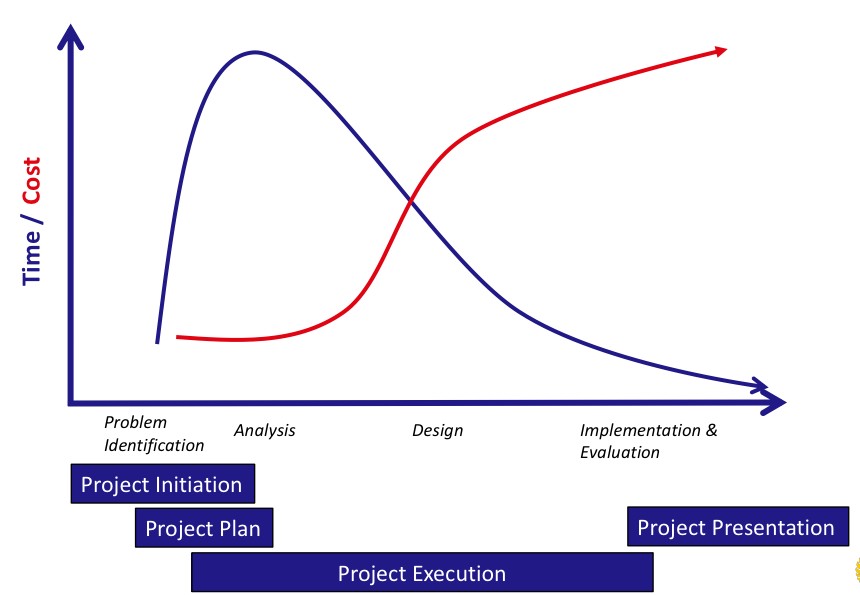Information System Development
Effort Allocation
Effort Allocation
Project Effort Estimation
Effort estimation involves trade-offs between functionality, time, and cost. The process assigns projected values for time and effort, with the most accurate estimates coming from experience.
Estimation methods:
- Use-case point method:
- Based on technical complexity factors (13) and environmental factors (8). An example can be seen in Karner Use Case Point Estimation
- Function point approach:
- Converts function points into person-months, which then determine project duration.
Methods, Techniques, and Instruments in Project Identification
| Methods | Techniques | Instruments |
|---|---|---|
| Observation | Direct location visit | Checklist |
| Interview | Face-to-face, telephone, email, etc. | List of questions |
| Questionnaires | Personal administration, email, etc. | Questionnaire |
| Document search | Direct location visit | List of documents |
| Sampling | Random, purposive, etc. | Randomization |
Project Management Tools
Project management tools aid in creating workplans by:
- Identifying all tasks, their sequence, and estimating the time to complete each task.
Common tools:
-
Work breakdown structures (WBS):
- A hierarchy of tasks that helps to:
- Identify the duration of each task
- Track the current status of each task
- Show task dependencies (which tasks must be completed before others can begin)
- A hierarchy of tasks that helps to:
-
Gantt charts:
- A horizontal bar chart that visually represents the WBS.
-
Network diagrams:
- Examples include PERT (Program Evaluation Review Technique) and CPM (Critical Path Method).
